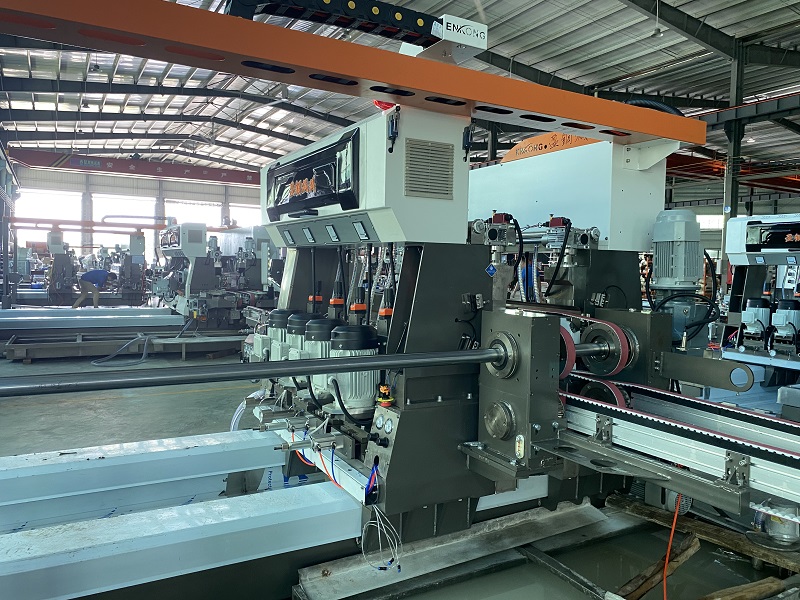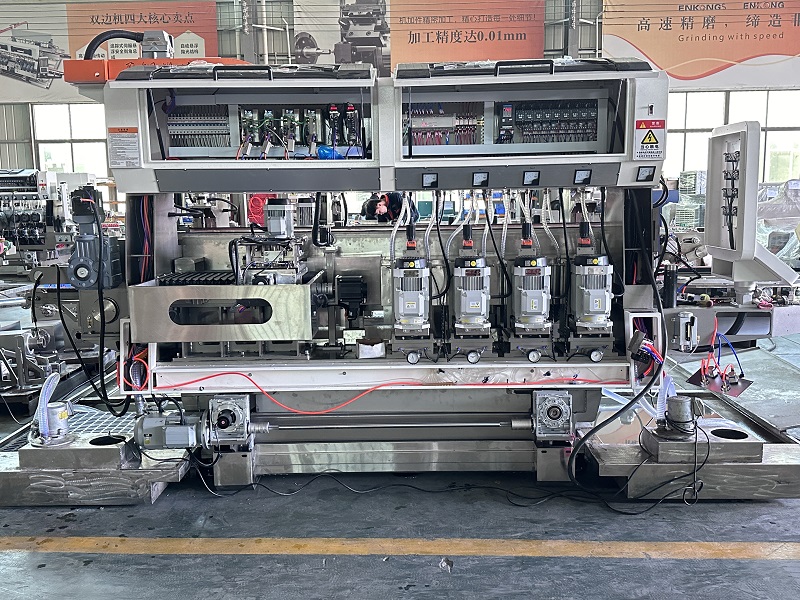In today's precision-driven glass industry, the difference between commodity work and premium fabrication lies in the details – particularly at the edge. As architectural designs grow bolder and tolerance windows shrink, investing in specialized glass processing machine technology becomes non-negotiable for competitive fabricators. The modern glass edging machine stands as the unsung hero of production lines, transforming rough-cut sheets into components worthy of high-visibility projects. This evolution in glass grinding machine capability represents more than just automation; it signifies a fundamental shift in quality control, throughput potential, and design flexibility.

The limitations of manual edgework are stark: inconsistent finishes, fatigue-induced errors, and unsustainable production speeds for complex profiles. A dedicated glass edging machine eliminates these constraints through engineered precision. Sophisticated units perform sequential operations – rapid material removal, exact profile shaping, fine grinding, and luminous polishing – with unwavering accuracy. Integrating a high-performance glass edging machine slashes processing times by up to 70% compared to traditional methods while simultaneously elevating finish quality beyond handcrafted potential. This dual advantage positions shops to profitably pursue contracts demanding both volume and perfection.
Versatility defines the next-generation glass processing machine. Today’s leading glass grinding machine platforms adapt seamlessly across material types and applications. Whether processing standard float glass, ultra-clear low-iron panels, laminated safety glass, or tempered sheets, a well-calibrated glass edging machine maintains consistent results. This flexibility proves invaluable for shops serving multiple sectors:
Architectural Glazing: Producing miles of flawless straight edges for curtain walls
Luxury Interiors: Crafting intricate bevels, ogees, and miters for high-end displays
Specialty Applications: Shaping edges for shower enclosures, furniture, or photovoltaic glass
A single robust glass processing machine can transition between these tasks with minimal downtime, making it a cornerstone asset for diversified operations.

Technologically, the contemporary glass grinding machine operates through multi-stage spindle systems. Each station executes specific tasks: coarse diamond wheels rapidly establish the edge profile; finer abrasives refine the surface; precision polishing units achieve optical clarity. Advanced CNC controls transform operator input into flawless execution, storing hundreds of edge profiles for instant recall. This automation within a modern glass edging machine reduces reliance on specialized labor while guaranteeing that the thousandth piece matches the first. The consistency delivered by such glass processing machine technology is simply unattainable through manual methods.
Beyond surface quality, a superior glass grinding machine delivers critical operational advantages:
Enhanced Tooling Longevity: Integrated coolant systems prevent thermal shock, extending diamond wheel life
Reduced Waste: Precision grinding minimizes glass breakage and rework
Improved Workplace Safety: Automated handling reduces direct contact with sharp edges
Dust Suppression: Closed-loop water filtration maintains cleaner air quality
These factors compound the ROI of a well-chosen glass edging machine, often paying for itself within 18 months through reduced consumable costs and increased throughput.
Selecting the right glass processing machine requires evaluating key parameters:
Material Capacity: Ensure the glass grinding machine accommodates your thickness range (3mm-25mm+)
Profile Library: Verify capabilities for required edge types (flat, pencil, chamfer, demi-bullnose)
Automation Level: Choose between semi-automatic and fully robotic loading systems
Integration Potential: Consider connectivity with existing cutting tables or washing systems
Leading manufacturers offer modular glass edging machine solutions scalable from compact straight-line edgers to 9-axis CNC beveling centers handling complex 3D shapes.
For automotive glass suppliers, medical device fabricators, or high-spec architectural specialists, the precision of a dedicated glass grinding machine becomes a competitive necessity. Tolerances under 0.1mm, defect-free polished edges, and absolute profile consistency aren't aspirational goals – they're baseline requirements met only by advanced glass processing machine technology. The absence of micro-chips or subsurface fractures ensured by a professional-grade glass edging machine directly impacts product longevity and safety compliance.
The transition to automated edgework represents a strategic evolution. A high-capacity glass grinding machine transforms a bottleneck operation into a throughput accelerator. Reduced manual intervention lowers labor costs while minimizing ergonomic injuries associated with hand grinding. Most critically, the quality assurance embedded in modern glass processing machine systems builds brand reputation – edges become silent ambassadors of your commitment to excellence.
Forward-focused fabricators recognize that edge quality is the new frontier. In markets where aesthetics intersect with performance, the capabilities of your glass edging machine determine your competitive ceiling. Investing in next-generation glass grinding machine technology isn't merely upgrading equipment; it's future-proofing your business against commoditization. Explore how the latest glass processing machine innovations can elevate your craftsmanship, expand your service offerings, and solidify your position as a quality leader – starting from the edge outward.

